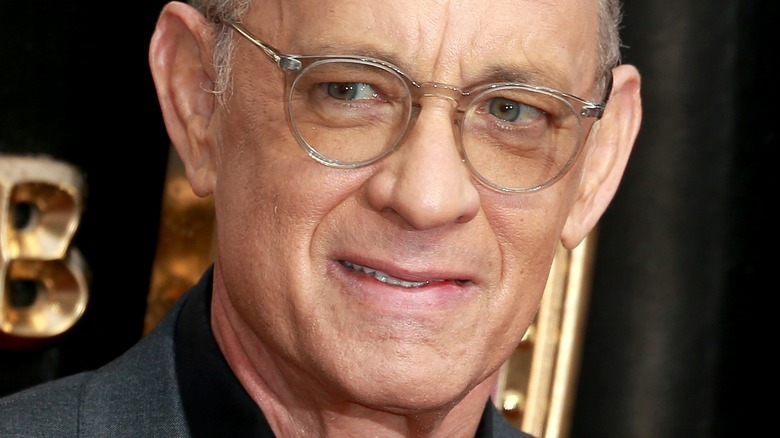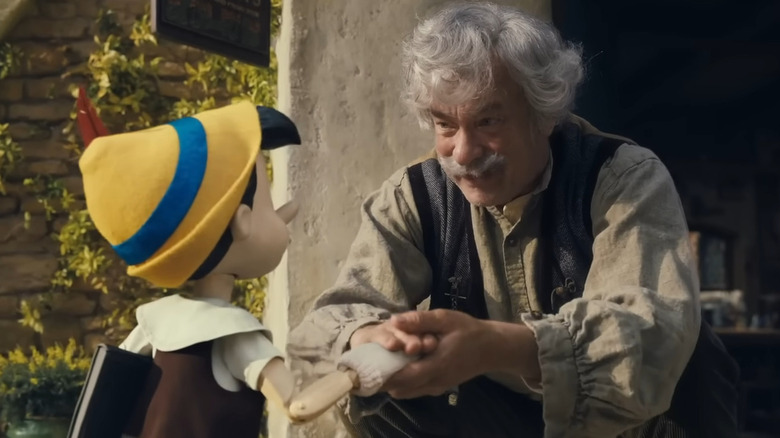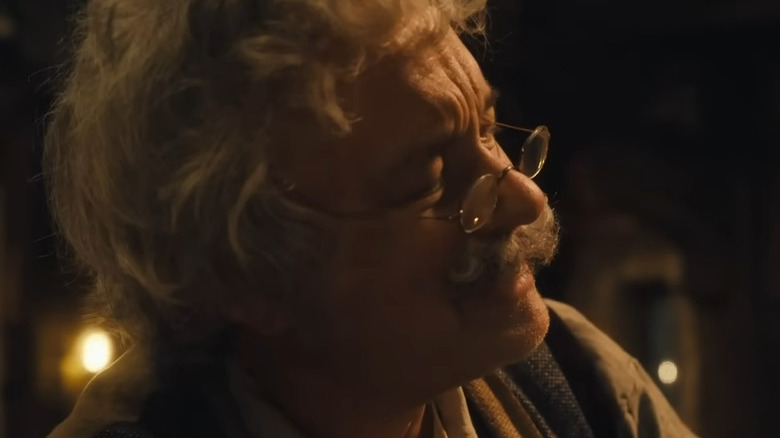Why Changing This Part Of Disney's Original Pinocchio Made Sense In The 2022 Remake
Contains spoilers for Disney's "Pinocchio (2022)."
By most observable metrics, Disney's live-action retelling of "Pinocchio," which adapts the 1940 animated Disney film of the same name, is an incredibly faithful addition to the current market of remakes. Beat for beat, the story's primary deviations come in the form of expansion rather than replacement. One look at the design for the titular puppet will assure audiences that, at least in this case, Disney sought nostalgia above all else (particularly compared to Guillermo Del Toro's "Pinocchio" film, also set to release in 2022). As far as mission statements go, there are worse roads to trek, especially when one takes the public's unnerved response to Disney's latest retelling, the quasi-live-action rendition of "The Lion King" in 2019, into account.
It does, however, make a few notable changes. For instance, there's a new character in Sabina (Jaquita Ta'le), a kind-hearted puppeteer in the employ of Stromboli (Giuseppe Battiston) whose big dreams lead her to entrepreneurship. As for new music, Geppetto (Tom Hanks) gets a small ditty, Sabina gets a fun number where her puppet dances with Pinocchio (Benjamin Evan Ainsworth), and the Coachman (Luke Evans) gets a rousing villain song.
Beyond this, there's one other important alteration — the entire ending — and it actually makes the movie more powerful.
Geppetto and Pinocchio switch places
First, so that everyone's working with the same basic information, let's walk through the original ending from almost 100 years ago (check the math, we're not wrong). When Geppetto and Pinocchio escape the bowels of Monstro the whale, they speed towards the shore in the tattered remains of a raft, desperate to achieve freedom. Monstro, for his part, is having none of this, and chases them with a rage that quite literally whips up a storm in his wake. The tinkerer and his puppet son make it to dry land, but only barely. Upon the sand, Geppetto discovers that the effort was too much for Pinocchio, who lays lifelessly, face down, in a puddle. It's very dark.
Gepetto takes Pinocchio home and, clearly in denial, puts him to bed. Shortly thereafter, the Blue Fairy (Cynthia Erivo in the new film) simultaneously revives Pinocchio and grants his wish to become a real boy. Now a tiny, breathing human being, Pinocchio and Geppetto celebrate this new phase in the journey of their little family, and then the movie ends with a swell of beautiful music.
This is not how the new movie comes to a close.
Rewind to Geppetto and Pinocchio's escape from Monstro who, in the new movie, is less of a whale and more of a many-tentacled whale-shaped sea beast. It's all very "Final Fantasy." In the 2022 film, the pair escape from Monstro in much the same manner but it's not Pinocchio who dies ... rather, it's Geppetto. Pinocchio finds him upon the sand, unresponsive and still. When he realizes what that means, Pinocchio begins to cry. He also begins to sing, humming the tune of "When You Wish Upon a Star" as a single tear falls on Geppetto's cheek.
Geppetto accepts Pinocchio as he is
In true Disney form, this combination — of magic, music, and tears — resurrects Geppetto right there on the beach. The tinkerer and the puppet — and the cricket, Jiminy (Joseph Gordon-Levitt) is there, too — rejoice in their reunion and in their freedom and in Pinocchio's accomplishments. What makes this ending more powerful is how Geppetto takes his wooden son and tell him, in no uncertain terms, that his wish at the beginning of the story was never half-granted, but rather perfect and complete in Pinocchio. To his son, he says, "Pinocchio, when you first came to me, I might have made you think I wanted somebody else ... but it was you I was wishing for. You will always be my real boy. There isn't a single thing I would change about you. I am so very proud of you and I love you so very much."
From there, Jiminy addresses the audiences, saying that the family lived happily ever after, regardless as to whether the Blue Fairy decided to use her magic to transform Pinocchio into a real boy or not. He suggests that maybe Pinocchio still became real, and audiences are treated to a brief view of what Pinocchio might look like as a human when he and Geppetto are leaving the beach, but it's not stated definitively if that occurs. Jiminy instead tells the audience that the two love each other and accept each other, and that there's no realer magic than such a bond.
While the original never directly indicated that Geppetto was disappointed with his son for being a magical wooden puppet, few things are as powerful as a parent going above and beyond to ensure that their children feel accepted for who they are.


